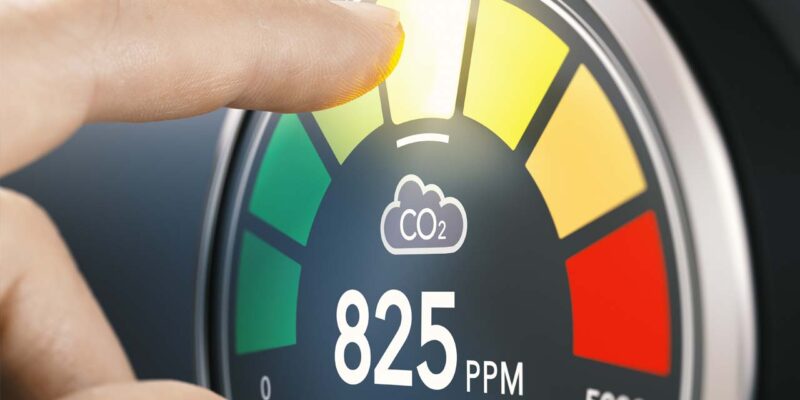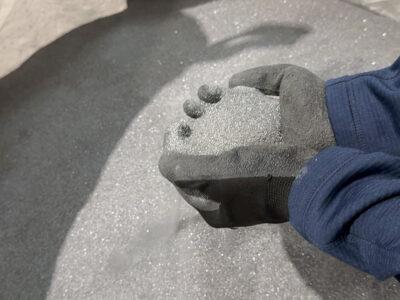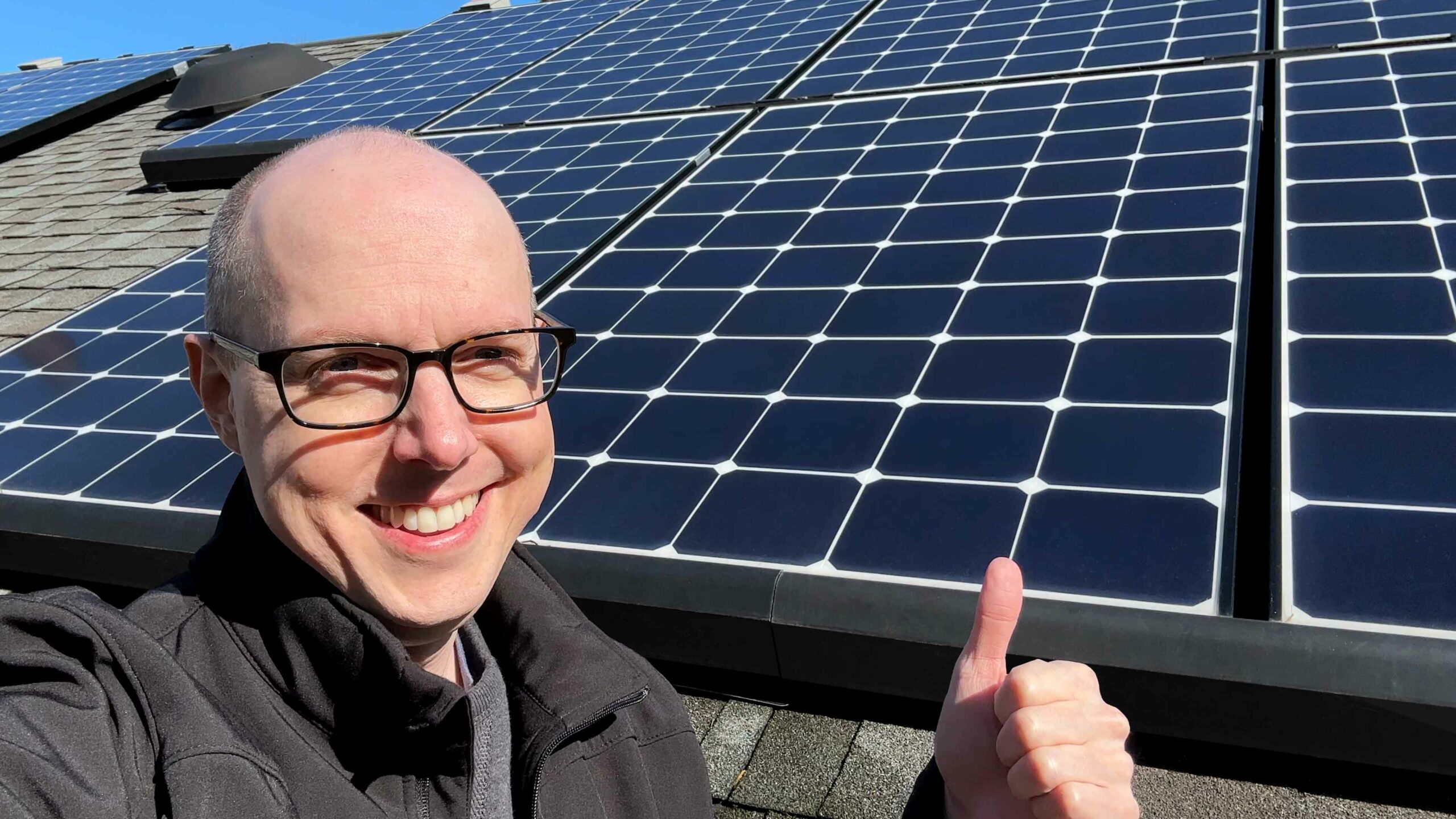Everyone is worried about outdoor air pollution, right? Yet, a poor indoor air quality (IAQ) can be an invisible yet ruthless killer. Even worse than Freddy Krueger. At least, you could see him in your dreams, I mean nightmares. Seriously, pollutants like volatile organic compounds (VOCs), particulate matter (PM), and CO2 are filling our house and damaging our health. So, what causes indoor air pollution and how can we tackle it? Before getting to that, let’s look into the dangers of a bad IAQ.
How Indoor Air Quality Affects Your Health
When thinking about air pollution, the first thing coming to mind is the dark gray smoke coming out of power plants’ chimneys or cars’ exhausts. And that’s because you can clearly see it. While walking through traffic jams is not a treat for our lungs, the air inside our house can be even more dangerous for our health. According to the Environmental Protection Agency (EPA), the level of indoor contaminants is up to 5x higher than that in ambient air.1 And that’s true whether you live in the countryside or in an industrialized area.
Even the most welcomed guests smell after 3 days, let alone these long-term toxic housemates. Or at least some of them. Regardless of the smell, indoor contaminants are leaving a negative mark on our life. In the best case scenario, they’re hurting our productivity2 and learning performance3. In other words, we’re getting dumb because of them. If that wasn’t bad enough, the World Health Organization (WHO) found that over 3 million people die every year because of indoor air pollution.4 To be more specific, the exposure to household air pollutants causes a number of diseases such as lung cancer, respiratory infections, strokes, and so on.
3 Types Of Indoor Air Pollution
That’s pretty scary, right? So, let’s find out which are the most common indoor air pollutants impacting our life and where they come from.
VOCs
Being among the leading household air pollutants, VOCs are organic liquid chemicals that vaporize at room temperature. Although their names sound nasty enough, their effects are even worse. For example, children breathing trichloroethylene are at a higher risk of leukemia.5 Also, when being exposed to toluene, pregnant women could give birth to babies with neurologic problems, retarded growth, and developmental issues.6 Other VOCs such as benzene and formaldehyde were recognized as carcinogens.7 Paints and cleaning products are some of the common sources of VOC-related indoor air pollution.8
PM
You can see PMs as very tiny particles floating around your house. Well, actually, you can’t see them, but you know what I mean. This is one of those cases where size matters. To be precise, the lower the worse. In fact, PM2.5, which are particles with a mean diameter lower than 2.5 μm, are the most dangerous ones. Think that a human hair is 70 μm max. When breathing in PM2.5-containing air, these particles get deep into our lungs and could even enter our bloodstream.9 Once in there, they won’t do you any good. Asthma, bronchitis, and heart attacks are just some of the health issues PM can cause. Although outdoor PM can sneak into your house when you open a window, you could also cook them up in your kitchen when using gas stoves.10
CO2
Carbon dioxide is infamous for being one of the major greenhouse gasses (GHG) in the atmosphere causing global warming. However, this colorless and odorless gas is also hiding inside our houses and messing up with our wellbeing. It’s widely accepted that if you stay in an indoor space with a level of CO2 above 5,000 ppm for many hours, you’ll experience headaches, dizziness, and nausea.11 On the other hand, recent research is showing that being exposed to 5x lower concentrations for just a few hours might be a problem for our health and productivity too.12 And that’s worrying because classrooms, office environments, and bedrooms easily reach or even go over a CO2 level of 1,000 ppm. But what’s filling up our rooms with carbon dioxide? Well, it’s more who than what. We all exhale CO2 to stay alive. Yet, when zipping too many people into a poorly ventilated room, breathing turns into self-poisoning.
Finding A Solution To Indoor Air Pollution
Right, we now have a better picture of the invisible enemy we’re facing, so it’s time to understand how to defeat it. With remote working becoming the new normal, we should also be smart on how to improve our home air quality. For instance, we could invest in a smart monitor to keep track either of VOCs13, CO214, or PM2.515. Or even getting one which can control them all in one go.16 All of these devices tap into electrochemical sensors which detect the presence of unwanted ingredients in our household air. Whenever the sensor measures an unsafe level of contamination, you’ll see a light indicator or receive a notification on your smartphone if you connect it to the monitor. When recording activities like cooking or painting onto it, a monitor can also help you identify pollution hotspots. This is an effective solution to prevent contamination in your house, but how can you actively reduce indoor air pollution? The EPA suggests three strategies.17 Source control should be on top of your list as it’s the most cost-efficient one. For example, you could switch to zero-VOC paints18 and low-VOC cleaning products.19 Though, this approach doesn’t quite work with CO2 as you can’t avoid breathing. In this case, ventilation is the way to go. This can be as simple as opening your window to let some fresh air in. Your last option would be to install an air cleaner. This is basically a purification unit that fits to your heating or ventilation system and decontaminates the incoming air. For example, combining High Efficiency Particulate Air (HEPA) filters with activated carbons (AC), you could get rid of PM and VOCs at the same time. Just like Mila’s dual-flow filters do.20 As the name suggests, HEPA filters are very good at blocking particles. Instead, ACs attract and bind gaseous organic compounds like VOCs onto their solid porous surface through a process called adsorption.
Do these solutions work?
Both smart monitors and filters sound like great technologies to tackle indoor air pollution. But do they actually work? Regardless of the pollutant to be detected, the use of low-cost sensors (LCS) have some limitations. Based on a recent review, there’s not enough data to validate their performance, which is often based on outdoor testing.21 Also, devices lose accuracy over time and should be replaced after 2 years in the best case scenario. But there are pollutant-specific challenges too. For example, if you have a mixture of VOCs in your indoor air, these sensors get mixed up and might miss a dangerous substance completely. As for PM, an LCS measures the laser light reflected by a certain particle. However, the laser beam fails to hit ultra-fine particles, which are those having a diameter smaller than 0.1 micron as well as being the most troublesome for our health. On top of that, changes in air flow and humidity can compromise the accuracy of their PM estimation. So, how about air cleaning technologies? HEPA filters are designed to trap 99.97% of particles with a diameter larger than 0.3 microns.22 Which means they’re a pretty safe bet to get rid of PM2.5. When it comes to VOCs removal, adsorption onto AC-based filters is the most reliable technology currently available on the market.23 Although achieving a removal efficiency higher than 90%24, you need to replace AC every 3 to 6 months as their pores get filled up with VOCs. Unlike for PM and VOCs, conventional indoor air cleaners are not normally capable of capturing CO2. However, AlgenAir claims to have developed an algae-based filter that reduces carbon dioxide indoor levels.25
Conclusions
Being aware of our IAQ is crucial to protect us against productivity slumps and diseases. While smart monitors seem to be not smart enough yet, they still give you a useful indication on how polluted your household air is without spending a fortune. In terms of active contamination reduction, air cleaning technologies offer an efficient yet more expensive solution. On the other hand, avoiding emissions in the first place is the most cost-efficient way to reduce indoor air pollution.
- “The Inside Story: A Guide to Indoor Air Quality | US EPA.” 22 Nov. 2022, https://www.epa.gov/indoor-air-quality-iaq/inside-story-guide-indoor-air-quality. Accessed 2 Mar. 2023. ↩︎
- “Influence of indoor environmental quality on human health and ….” 20 Apr. 2019, https://www.sciencedirect.com/science/article/abs/pii/S0959652619303348. Accessed 2 Mar. 2023. ↩︎
- “Indoor air quality and health in schools: A critical review for ….” 1 Oct. 2022, https://www.sciencedirect.com/science/article/pii/S2352710222009202. Accessed 2 Mar. 2023. ↩︎
- “Household air pollution – Health risks – Air quality and health.” https://www.who.int/teams/environment-climate-change-and-health/air-quality-and-health/sectoral-interventions/household-air-pollution/health-risks. Accessed 2 Mar. 2023. ↩︎
- “Trichloroethylene Cancer Epidemiology: A Consideration of Select ….” https://www.ncbi.nlm.nih.gov/pmc/articles/PMC1570052/. Accessed 2 Mar. 2023. ↩︎
- “Binge Toluene Exposure in Pregnancy and Pre-weaning … – NCBI.” 15 Apr. 2013, https://www.ncbi.nlm.nih.gov/pmc/articles/PMC3713175/. Accessed 2 Mar. 2023. ↩︎
- “[Evaluation of total exposure to benzene and formaldehyde in the ….” https://pubmed.ncbi.nlm.nih.gov/16646255/. Accessed 2 Mar. 2023. ↩︎
- “Indoor air pollution: What causes it and how to tackle it.” 6 Jul. 2022, https://www.weforum.org/agenda/2022/07/what-causes-indoor-air-pollution-sources-how-to-reduce/. Accessed 6 Mar. 2023. ↩︎
- “How Does PM Affect Human Health? | Air Quality Planning Unit – EPA.” https://www3.epa.gov/region1/airquality/pm-human-health.html. Accessed 2 Mar. 2023. ↩︎
- “Gas stoves can generate unsafe levels of indoor air pollution – Vox.” 11 May. 2020, https://www.vox.com/energy-and-environment/2020/5/7/21247602/gas-stove-cooking-indoor-air-pollution-health-risks. Accessed 2 Mar. 2023. ↩︎
- “Carbon Dioxide (CO2) – MN Dept. of Health.” 3 Oct. 2022, https://www.health.state.mn.us/communities/environment/air/toxins/co2.html. Accessed 6 Mar. 2023. ↩︎
- “Indoor carbon dioxide levels could be a health hazard, scientists warn.” 8 Jul. 2019, https://www.theguardian.com/environment/2019/jul/08/indoor-carbon-dioxide-levels-could-be-a-health-hazard-scientists-warn. Accessed 6 Mar. 2023. ↩︎
- “Eve Room | evehome.com.” https://www.evehome.com/en-us/eve-room. Accessed 6 Mar. 2023. ↩︎
- “Smart Indoor Air Quality Monitor | Netatmo.” https://www.netatmo.com/el-gr/aircare/homecoach. Accessed 6 Mar. 2023. ↩︎
- “VINDRIKTNING Air quality sensor – IKEA.” https://www.ikea.com/us/en/p/vindriktning-air-quality-sensor-60515911/. Accessed 6 Mar. 2023. ↩︎
- “How does particulate matter (PM) impact your health? – Airthings.” 12 Jan. 2021, https://www.airthings.com/resources/particulate-matter-health. Accessed 6 Mar. 2023. ↩︎
- “The Inside Story: A Guide to Indoor Air Quality | US EPA.” 22 Nov. 2022, https://www.epa.gov/indoor-air-quality-iaq/inside-story-guide-indoor-air-quality. Accessed 6 Mar. 2023. ↩︎
- “The 8 Best Zero-VOC Paints of 2023 – Treehugger.” https://www.treehugger.com/zero-voc-interior-paints-renovation-healthy-home-4858785. Accessed 6 Mar. 2023. ↩︎
- “Are Cleaning Products Bad for Your Health and Indoor Air? – Molekule.” 29 Aug. 2019, https://molekule.com/blog/are-cleaning-products-bad-for-your-health-and-indoor-air/. Accessed 6 Mar. 2023. ↩︎
- “HEPA + Carbon Filters – Mila Cares.” https://www.milacares.com/filters. Accessed 7 Mar. 2023. ↩︎
- “Full article: Review of low-cost sensors for indoor air quality.” 27 Jun. 2022, https://www.tandfonline.com/doi/full/10.1080/05704928.2022.2085734. Accessed 7 Mar. 2023. ↩︎
- “Indoor air pollution: What causes it and how to tackle it.” 6 Jul. 2022, https://www.weforum.org/agenda/2022/07/what-causes-indoor-air-pollution-sources-how-to-reduce/. Accessed 7 Mar. 2023. ↩︎
- “Study: Indoor air cleaners fall short on removing volatile organic ….” 29 Oct. 2021, https://news.mit.edu/2021/study-finds-indoor-air-cleaners-fall-short-removing-volatile-organic-compounds-1029. Accessed 7 Mar. 2023. ↩︎
- “Indoor Air Quality: A Review of Cleaning Technologies – MDPI.” 7 Sept. 2022, https://www.mdpi.com/2076-3298/9/9/118/pdf. Accessed 7 Mar. 2023. ↩︎
- “Carbon Dioxide Air Purifier – AlgenAir.” https://algenair.com/pages/what-is-carbon-dioxide-and-how-do-you-reduce-it. Accessed 7 Mar. 2023. ↩︎


















Comments